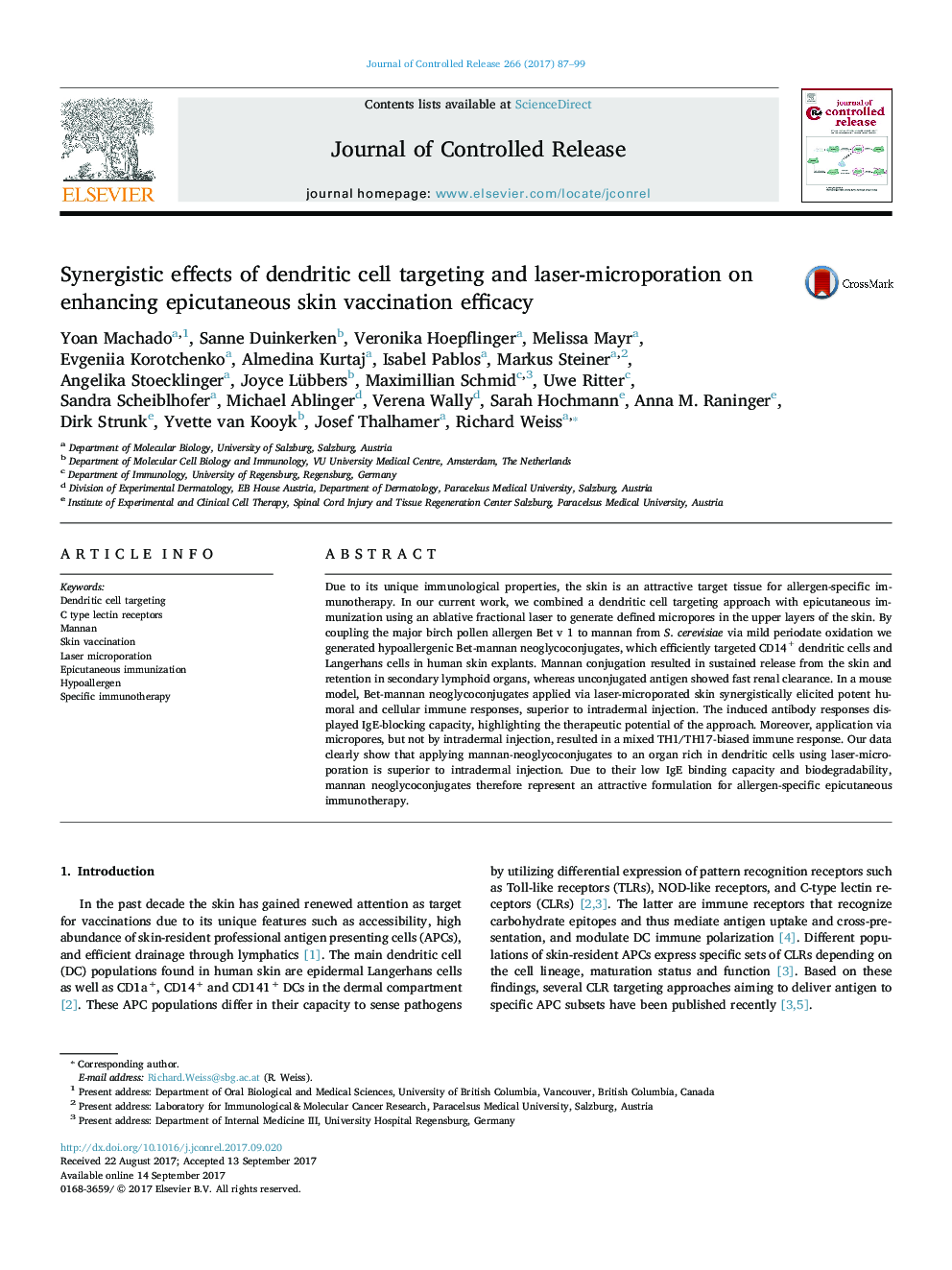| Article ID | Journal | Published Year | Pages | File Type |
|---|---|---|---|---|
| 5433332 | Journal of Controlled Release | 2017 | 13 Pages |
Due to its unique immunological properties, the skin is an attractive target tissue for allergen-specific immunotherapy. In our current work, we combined a dendritic cell targeting approach with epicutaneous immunization using an ablative fractional laser to generate defined micropores in the upper layers of the skin. By coupling the major birch pollen allergen Bet v 1 to mannan from S. cerevisiae via mild periodate oxidation we generated hypoallergenic Bet-mannan neoglycoconjugates, which efficiently targeted CD14+ dendritic cells and Langerhans cells in human skin explants. Mannan conjugation resulted in sustained release from the skin and retention in secondary lymphoid organs, whereas unconjugated antigen showed fast renal clearance. In a mouse model, Bet-mannan neoglycoconjugates applied via laser-microporated skin synergistically elicited potent humoral and cellular immune responses, superior to intradermal injection. The induced antibody responses displayed IgE-blocking capacity, highlighting the therapeutic potential of the approach. Moreover, application via micropores, but not by intradermal injection, resulted in a mixed TH1/TH17-biased immune response. Our data clearly show that applying mannan-neoglycoconjugates to an organ rich in dendritic cells using laser-microporation is superior to intradermal injection. Due to their low IgE binding capacity and biodegradability, mannan neoglycoconjugates therefore represent an attractive formulation for allergen-specific epicutaneous immunotherapy.
Graphical abstractDownload high-res image (205KB)Download full-size image
